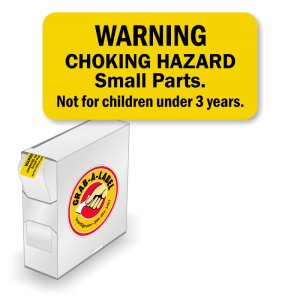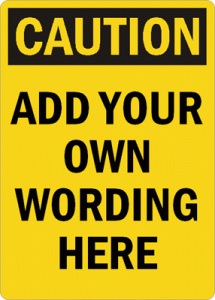Why are there so many obvious warnings on products?
Everyone has seen those slightly silly warning labels. “Do not tip or rock vending machine.” “Caution: Coffee is hot.” “Warning: choking hazard.” And sometimes you wonder, just why are these warning labels everywhere?
The short answer is, “because it’s the law.” Under the law, product manufacturers have three major obligations to their customers: (1) design non-defective products, (2) manufacture them competently, and (3) warn the public of non-obvious product hazards.
How this law developed is pretty interesting. In the 1800s, there had to be an actual contract between a product’s manufacturer and the consumer for an injured consumer to be able to sue. But as the modern economy developed, it soon became apparent that it wasn’t possible for individual consumers to judge how their products were made anymore. Over the years, the courts gradually transferred full responsibility for defects to manufacturers, culminating in a 1963 California case involving large damages for a defective lathe.
Over the years the manufacturers got more and more obligations to warn consumers of the unseen, potentially dangerous aspects of their products, including the ‘86 Ford Bronco’s unfortunate habit of rolling over. This led to the proliferation of warning labels. The court’s logic was, it would be unrealistic to expect individual consumers to carefully screen every single product they buy for potential hazards, so why not make it the manufacturer’s responsibility to deal with that?
The trouble is, some consumers do dumb things.
For example, most people know that cologne is mostly alcohol, alcohol is flammable, and lit candles are a source of fire. So it’s not a good idea to mix alcohol and fire, unless you’re in a fancy cocktail bar. Naturally, two teenagers decided to spray cologne over a candle. One of them burned herself, and sued. She won, because that some consumers don’t know that perfume is highly flammable and made of alcohol– but the manufacturer absolutely does.
But sometimes there’s a really legitimate issue at stake, and the company really did mess up.
For example, in the much-maligned McDonald’s coffee case, an elderly woman suffered third-degree burns and required skin grafts after spilling her McDonald’s coffee. (Obviously, a coffee spill shouldn’t cause third-degree burns or require skin grafts. And to make matters worse, McDonald’s knew that its coffee could cause horrible burns because it had a company policy to keep the coffee that hot.)
Ultimately, the tension between these two factors — stupidity and safety — is why there are so many warning labels everywhere.












